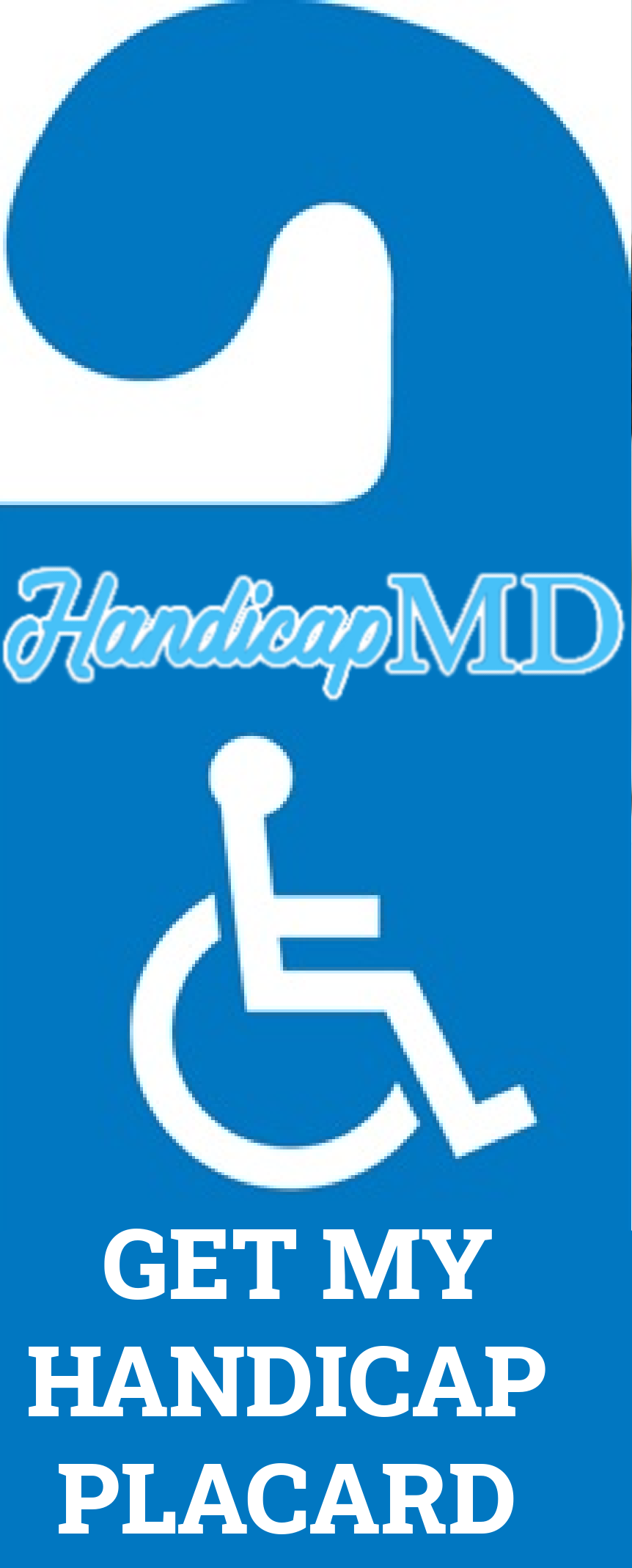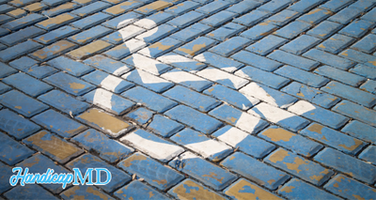
Myths vs. Facts: Debunking Common Misconceptions about Handicap Placards in Maryland
Introduction
Handicap placards play a crucial role in providing accessibility and convenience to individuals with disabilities. However, there are several misconceptions surrounding these placards that lead to confusion and misinformation. In this comprehensive article, we aim to debunk the common myths and present the facts about handicap placards in Maryland. By addressing these misconceptions, we hope to improve understanding and ensure that everyone can access the benefits they are entitled to.
What are handicap placards?
Definition and purpose
Handicap placards, also known as disabled parking permits or blue badges, are official identification cards or tags displayed in vehicles to indicate that the driver or passenger has a disability and requires special parking privileges. These placards are issued to individuals with mobility limitations, allowing them to park in designated accessible parking spaces.
Types of handicap placards
There are two types of handicap permits: temporary and permanent. Temporary placards are issued for a limited period, typically six months to a year, and are suitable for individuals with temporary disabilities. Permanent placards, on the other hand, are issued to individuals with long-term or permanent disabilities.
Myths and misconceptions about placards
Myth 1: Handicap placards are easily abused
One common myth surrounding disability tags is that they are easily abused by individuals who do not truly require them. This misconception stems from instances where people have observed seemingly able-bodied individuals using handicap parking spaces. However, it is important to remember that not all disabilities are visible. Many disabilities, such as chronic pain or heart conditions, may not be apparent to others.
Myth 2: Handicap placards are only for wheelchair users
Another prevalent myth is that disability tags are exclusively meant for individuals who use wheelchairs. While wheelchair users are eligible for disability tags, they are not the only ones who can benefit from them. Handicap placards are designed to assist individuals with a wide range of disabilities, including mobility limitations, respiratory conditions, or chronic illnesses that affect their ability to walk long distances.
Myth 3: Handicap placards are permanent
Contrary to popular belief, disability tags are not always permanent. Temporary placards are issued to individuals with temporary disabilities, such as those recovering from surgeries or injuries. These placards have an expiration date and need to be renewed periodically to ensure they are still necessary.
Myth 4: Handicap placards are only for elderly individuals
Some people mistakenly believe that disability tags are solely intended for elderly individuals. While age can be a contributing factor for disability, disability tags are available to people of all ages who meet the eligibility criteria. Disabilities can affect individuals at any stage of life, and the issuance of disability tags is based on the specific needs and limitations of the individual, regardless of their age.
Facts about handicap placards
Fact 1: Handicap placards require proper documentation
To obtain a handicap placard in Maryland, individuals must provide appropriate documentation to validate their disability. This documentation may include a doctor's certification, medical records, or other relevant evidence. The purpose of this requirement is to ensure that only individuals with genuine disabilities receive the benefits of a disability sign.
Fact 2: Handicap placards have expiration dates
As mentioned earlier, disability tags have expiration dates. This allows the authorities to periodically review the individual's condition and reassess their eligibility. The renewal process ensures that the placards are allocated to those who still require them, preventing misuse and keeping the system fair for all.
Fact 3: Handicap placards benefit a range of disabilities
Disability tags are not limited to specific types of disabilities. They are issued to individuals with various mobility limitations, chronic illnesses, visual impairments, and other conditions that affect their ability to walk or engage in daily activities. The goal is to provide equal access and support to individuals with diverse disabilities.
Fact 4: Handicap placards are for temporary conditions
While permanent placards are available for individuals with long-term disabilities, temporary placards cater to individuals with temporary conditions. These conditions can include injuries, surgeries, or temporary impairments due to treatments. The availability of temporary placards ensures that individuals with short-term mobility limitations also receive the necessary accommodations.
How to obtain a handicap placard
Eligibility requirements
To qualify for a handicap placard in Maryland, individuals must meet specific eligibility criteria. These criteria typically include having a disability that significantly impairs mobility, such as difficulty walking, using mobility aids, or having a respiratory condition that affects their ability to walk long distances. The exact requirements may vary, so it is important to consult the Maryland Motor Vehicle Administration (MVA) for detailed information.
Application process
To obtain a Maryland handicap placard, individuals need to complete an application form provided by the Maryland MVA. The application form requires personal information, details about the disability or condition, and supporting documentation from a healthcare professional. Once the application is submitted and approved, the individual will receive their handicap placard.
Importance of handicap placards
Access to reserved parking spaces
One of the key benefits of disability signs is access to reserved parking spaces. These spaces are conveniently located near building entrances, ensuring individuals with disabilities can easily access public facilities, offices, and shopping centers. The availability of designated parking spaces reduces the distance individuals need to travel and minimizes the physical strain on their bodies.
Facilitating daily activities
Disability signs also enable individuals with disabilities to carry out their daily activities with greater ease. Whether it's going to work, attending medical appointments, or running errands, having access to designated parking spaces ensures individuals do not face unnecessary barriers or fatigue during their daily routines. This increased accessibility promotes independence and enhances the overall quality of life for individuals with disabilities.
FAQs about Handicap Placards in Maryland
Q: How can I apply for a handicap placard in Maryland?
To apply for a handicap placard in this state, you need to complete the Application for Maryland Parking Placards/License Plates for Individuals with a Disability form. This form can be obtained from the Maryland Motor Vehicle Administration (MVA) website or any MVA branch office. Once you have completed the form, you must submit it along with the required medical certification to the MVA for processing.
Q: How long does it take to receive a handicap placard after applying?
The processing time for a handicap placard in this state varies, but it typically takes around two to four weeks. It is advisable to apply well in advance to ensure that you receive your placard before you need it. If there are any delays or issues with your application, the MVA will contact you to provide further instructions or request additional documentation.
Q: Can I use my handicap placard in rental vehicles or when riding with someone else?
Yes, disability signs issued in this state can be used in rental vehicles or any vehicle you are traveling in as a passenger. The placard is tied to the individual, not the vehicle, providing you with the necessary parking privileges irrespective of the vehicle you are using. However, it is important to note that the placard should only be used when the individual it is issued to is present in the vehicle.
Q: Can I use my out-of-state handicap placard in Maryland?
Yes, this state recognizes and honors disability signs issued by other states. If you have an out-of-state placard, you can use it in Maryland without any issues. However, it is crucial to adhere to Maryland's parking regulations and comply with any specific requirements or restrictions that may apply.
Q: Can I renew my handicap placard online?
Yes, the Maryland Motor Vehicle Administration (MVA) offers online renewal services for disability signs. The online renewal process provides a convenient option for individuals to renew their placards without visiting an MVA branch office. However, not all placard renewals are eligible for online renewal. The MVA will provide instructions on whether your placard can be renewed online or if an in-person visit is required.
Q: What should I do if my handicap placard is lost, stolen, or damaged?
If your disability tag is lost, stolen, or damaged, you should report it immediately to the Maryland Motor Vehicle Administration (MVA). You can contact the MVA's Customer Service Center or visit an MVA branch office to request a replacement placard. It is important to safeguard your placard and report any incidents promptly to prevent misuse or unauthorized use.
Q: Can a friend or family member use my handicap placard?
Disability tags are non-transferable and can only be used by the individual for whom they are issued. It is illegal to lend or use someone else's placard.
Conclusion
Understanding the realities and dispelling the myths surrounding handicap placards in Maryland is crucial for promoting inclusivity and accessibility. Disability tags are not limited to wheelchair users, are essential even when accessible parking spaces are scarce, and are subject to strict eligibility criteria to prevent abuse. They require periodic renewal and offer reciprocity across states. By debunking these common misconceptions, we can ensure that individuals with disabilities can navigate their daily lives with greater ease and convenience.
.png)






